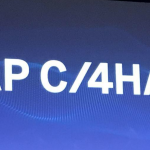
SAP introduced a new version of SAP Commerce Cloud (previously SAP Hybris Commerce). In this article, I explain the key changes, improvements and enhancements announced by SAP. The article is based on the official release notes and videos as well as a bit of experimenting with the new version. After examination of the materials, code changes and documentation updates, I have to say that this release is just a minor update. Among the enhancements, only a few deserve to be highlighted: Integration API and, at a stretch, SmartEdit Content Versioning.
Let’s have a deeper look at the new features. Read More »
There is a new feature in hybris 6.6, Generic Audit. The new mechanism keeps track of modifications of attribute values of the auditable set of hybris objects. For this purpose, both the original value of the object and its new value are stored in the database for further inspection, if the needs arise. According to the documentation, you can turn on and off auditing for particular types. For frequently changed objects, there is a risk that the system may consume a lot of database space over time, and the database itself grows to a very large size over time. So if you keep auditing on, you should keep these things under control.
Shortly after SAP hybris 6.6 is released I found that this mechanism doesn’t work well. Specifically, when all the audit.*.enabled=false settings are applied, there are still types that are being audited anyway. The examples are Employee, Customer and Product. Many people observed the same, and the issue was reported to SAP. The bug has already been fixed, and, as to my knowledge, SAP has released a patch. I haven’t received the patch yet.
I decided to investigate the issue in detail. This article reveals the details of the problem.
Read More »

The services listed below are intensively used in SAP hybris development. It is not a full list of hybris services, but these are used almost in every project. I built the rating of services used in hybris source code and used it as a starting point for this article.
The quick reference below will help you with understanding the important concepts on how services work and where they are used. For all services, the corresponding beans have the same name (start with a lowercase as per beans naming convention) Read More »
Groovy Scripting in hybris allows you to access hybris server objects directly from your browser. In this post, I share a new set of scripts. Read More »
In hybris 6.6, almost all project-specific files are located in the special folder called “data folder”. The structure of this folder is not well documented. The folders and files have “random” names. Basically, it is not very important until you find that this folder is too big. Understanding of its structure and purpose of its components will help you to troubleshoot and optimize the system.
The official hybris documentation explains some technical aspects, but pretty tenuous. In this article, I’m trying to look deeper. Read More »

A big announcement from Florida: SAP Hybris is replaced by SAP Customer Experience (or SAP CX) for the brand and SAP C/4HANA for the CX suite, a “new CRM”. Latest acquisitions, Gigya (customer identity management), CallidusCloud (technology that links salespeople with information related to pricing, incentives & commissions), and Coresystems (the field service module) are now part of SAP C/4 HANA.
You will find a a single-page view of what this suite is, all products and components. Read More »
Impex is a hybris-specific language on top of CSV to import/export data the database. Hybris impex engine converts the ImpEx statements into SQL. The developers deal with ImpEx only: SQL statements are not used at all. The syntax of Impex is quite… Read More »

I thought it would be really great to know more about Oracle Commerce.
So I decided to learn it better, and fix my thoughts and conclusions in the form of comparison with what I know about SAP Hybris Commerce. Yes, it is still a Hybris blog, but…
I’ve been participating in negotiations on what platform is better suited for customer’s needs. Understanding both Oracle Commerce and SAP Hybris really counts. I participated in many meetings in my past where nobody in the room was able to compare the products properly. Oracle people big up their products without clear understanding of pros and cons of SAP Hybris, and SAP managers behave in the same way. The partners are generally good at any one thing.
I hope the information below will help you to picture your own understanding. I was trying to be as objective as I can. Despite the fact the blog is hybris-centered, all strengths of Oracle Commerce are clearly highlighted and all weaknesses of Hybris are present too.
In this document, I compare four e-commerce products from SAP and Oracle:
- SAP Hybris Commerce On Premise
- SAP Hybris Commerce Cloud
- Oracle Commerce (ex-ATG) On Premise
- Oracle Commerce Cloud
Out-of-the-box SAP Commerce hybris extensions are great examples of how to customize the platform delivered directly from SAP. They can be used as a reference of implementation and can be considered as a vendor-recommended best-practice way.
The extensions come in source code form, with comments and documentation. It is a good starting point in finding a solution: the way SAP recommends in their packaged extensions is likely better than anything else, because you never know what side effects you may face if you go with the experimental solution. After all, why to reinvent the wheel?
Learning by examples and design by examples have a lot in common. You can use this approach to upskill junior developers and perfect your own expertise. For me personally, there is no other way to learn solution architecture other than studying the experience of others. Read More »

The purpose of this document is to shed a light on the internal data structures used by SAP Hybris Commerce. I explain system tables and attributes, their purpose and meaning.
Understanding of the internal structure is very useful in troubleshooting and low-level data analysis. For example, direct access to the database may show that your system has a lot of unused items, and it affects the performance. Analyzing the data is also extremely helpful with data integrity issues. Read More »
